Control of chronic pain by the ubiquitin proteasome system in the spinal cord
- PMID: 17670969
- PMCID: PMC6673055
- DOI: 10.1523/JNEUROSCI.5126-06.2007
Control of chronic pain by the ubiquitin proteasome system in the spinal cord
Abstract
Chronic pain is maintained in part by long-lasting neuroplastic changes in synapses and several proteins critical for synaptic plasticity are degraded by the ubiquitin-proteasome system (UPS). Here, we show that proteasome inhibitors administered intrathecally or subcutaneously prevented the development and reversed nerve injury-induced pain behavior. They also blocked pathological pain induced by sustained administration of morphine or spinal injection of dynorphin A, an endogenous mediator of chronic pain. Proteasome inhibitors blocked mechanical allodynia and thermal hyperalgesia in all three pain models although they did not modify responses to mechanical stimuli, but partially inhibited responses to thermal stimuli in control rats. In the spinal cord, these compounds abolished the enhanced capsaicin-evoked calcitonin gene-related peptide (CGRP) release and dynorphin A upregulation, both elicited by nerve injury. Model experiments demonstrated that the inhibitors may act directly on dynorphin-producing cells, blocking dynorphin secretion. Thus, the effects of proteasome inhibitors on chronic pain were apparently mediated through several cellular mechanisms indispensable for chronic pain, including those of dynorphin A release and postsynaptic actions, and of CGRP secretion. Levels of several UPS proteins were reduced in animals with neuropathic pain, suggesting that UPS downregulation, like effects of proteasome inhibitors, counteracts the development of chronic pain. The inhibitors did not produce marked or disabling motor disturbances at doses that were used to modify chronic pain. These results suggest that the UPS is a critical intracellular regulator of pathological pain, and that UPS-mediated protein degradation is required for maintenance of chronic pain and nociceptive, but not non-nociceptive responses in normal animals.
Figures
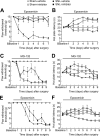

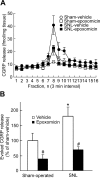
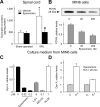
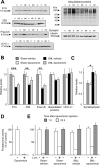
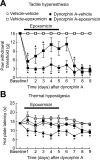

Similar articles
-
Sustained morphine exposure induces a spinal dynorphin-dependent enhancement of excitatory transmitter release from primary afferent fibers.J Neurosci. 2002 Aug 1;22(15):6747-55. doi: 10.1523/JNEUROSCI.22-15-06747.2002. J Neurosci. 2002. PMID: 12151554 Free PMC article.
-
A role of the ubiquitin-proteasome system in neuropathic pain.J Neurosci. 2002 Feb 15;22(4):1363-72. doi: 10.1523/JNEUROSCI.22-04-01363.2002. J Neurosci. 2002. PMID: 11850463 Free PMC article.
-
Extraterritorial neuropathic pain correlates with multisegmental elevation of spinal dynorphin in nerve-injured rats.Pain. 2000 May;86(1-2):185-94. doi: 10.1016/s0304-3959(00)00243-8. Pain. 2000. PMID: 10779675
-
Viral entry and the ubiquitin-proteasome system.Cell Microbiol. 2021 Feb;23(2):e13276. doi: 10.1111/cmi.13276. Epub 2020 Oct 26. Cell Microbiol. 2021. PMID: 33037857 Review.
-
Role of the ubiquitin-proteasome system in brain ischemia: friend or foe?Prog Neurobiol. 2014 Jan;112:50-69. doi: 10.1016/j.pneurobio.2013.10.003. Epub 2013 Oct 22. Prog Neurobiol. 2014. PMID: 24157661 Review.
Cited by
-
Role of the Ubiquitin System in Chronic Pain.Front Mol Neurosci. 2021 May 28;14:674914. doi: 10.3389/fnmol.2021.674914. eCollection 2021. Front Mol Neurosci. 2021. PMID: 34122010 Free PMC article. Review.
-
Nanoparticles Exacerbate Both Ubiquitin and Heat Shock Protein Expressions in Spinal Cord Injury: Neuroprotective Effects of the Proteasome Inhibitor Carfilzomib and the Antioxidant Compound H-290/51.Mol Neurobiol. 2015 Oct;52(2):882-98. doi: 10.1007/s12035-015-9297-9. Epub 2015 Jul 1. Mol Neurobiol. 2015. PMID: 26126513
-
Mechanisms underlying fibronectin-induced up-regulation of P2X4R expression in microglia: distinct roles of PI3K-Akt and MEK-ERK signalling pathways.J Cell Mol Med. 2009 Sep;13(9B):3251-9. doi: 10.1111/j.1582-4934.2009.00719.x. Epub 2009 Feb 27. J Cell Mol Med. 2009. PMID: 19298529 Free PMC article.
-
Inhibition of the ubiquitin-proteasome activity prevents glutamate transporter degradation and morphine tolerance.Pain. 2008 Dec;140(3):472-478. doi: 10.1016/j.pain.2008.09.028. Epub 2008 Nov 4. Pain. 2008. PMID: 18986766 Free PMC article.
-
Spinal Fbxo3-Dependent Fbxl2 Ubiquitination of Active Zone Protein RIM1α Mediates Neuropathic Allodynia through CaV2.2 Activation.J Neurosci. 2016 Sep 14;36(37):9722-38. doi: 10.1523/JNEUROSCI.1732-16.2016. J Neurosci. 2016. PMID: 27629721 Free PMC article.
References
-
- Adams J, Behnke M, Chen S, Cruickshank AA, Dick LR, Grenier L, Klunder JM, Ma YT, Plamondon L, Stein RL. Potent and selective inhibitors of the proteasome: dipeptidyl boronic acids. Bioorg Med Chem Lett. 1998;8:333–338. - PubMed
-
- Angst MS, Clark JD. Opioid-induced hyperalgesia: a qualitative systematic review. Anesthesiology. 2006;104:570–587. - PubMed
-
- Bachar O, Adner M, Uddman R, Cardell LO. Toll-like receptor stimulation induces airway hyper-responsiveness to bradykinin, an effect mediated by JNK and NF-kappa B signaling pathways. Eur J Immunol. 2004;34:1196–1207. - PubMed
-
- Bakalkin G, Yakovleva T, Terenius L. NF-kappa B-like factors in the murine brain. Developmentally regulated and tissue-specific expression. Brain Res Mol Brain Res. 1993;20:137–146. - PubMed
Publication types
MeSH terms
Substances
Grants and funding
LinkOut - more resources
Full Text Sources
Other Literature Sources
Medical
Research Materials
